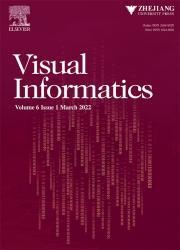ArtEyer:为美术认证丰富基于gpt的代理与上下文数据可视化
IF 3.8
3区 计算机科学
Q2 COMPUTER SCIENCE, INFORMATION SYSTEMS
引用次数: 0
摘要
美术鉴定在保护文化遗产、保证艺术品完整性方面具有重要作用。传统的鉴定方法需要专业人员收集大量的参考资料并进行详细的分析。为了减轻困难,我们与领域专家合作开发了一个基于gpt的代理,即ArtEyer,它提供准确的归属,确定来源和作者,并执行可视化分析。尽管会话式用户界面很方便,但由于幻觉问题和与提示相关的陡峭学习曲线,新手用户可能仍然面临挑战。为了面对这些障碍,我们提出了一种新颖的解决方案,将交互式数据可视化放入对话中。我们从外部领域相关数据库创建上下文可视化,以确保数据的可信度,并允许用户通过直接与这些可视化交互向代理提供精确的指令,从而克服基于自然语言的提示固有的模糊性。我们通过实验室用户研究来评估ArtEyer,并通过实际案例展示其使用情况。本文章由计算机程序翻译,如有差异,请以英文原文为准。
ArtEyer: Enriching GPT-based agents with contextual data visualizations for fine art authentication
Fine art authentication plays a significant role in protecting cultural heritage and ensuring the integrity of artworks. Traditional authentication methods require professionals to collect many reference materials and conduct detailed analyses. To ease the difficulty, we collaborate with domain experts to develop a GPT-based agent, namely ArtEyer, that offers accurate attributions, determines the origin and authorship, and executes visual analytics. Despite the convenience of the conversational user interface, novice users may still face challenges due to the hallucination issue and the steep learning curve associated with prompting. To face these obstacles, we propose a novel solution that places interactive data visualizations into the conversations. We create contextual visualizations from an external domain-dependent database to ensure data trustworthiness and allow users to provide precise instructions to the agent by interacting directly with these visualizations, thus overcoming the vagueness inherent in natural language-based prompting. We evaluate ArtEyer through an in-lab user study and demonstrate its usage with a real-world case.
求助全文
通过发布文献求助,成功后即可免费获取论文全文。
去求助
来源期刊

Visual Informatics
Computer Science-Computer Graphics and Computer-Aided Design
CiteScore
6.70
自引率
3.30%
发文量
33
审稿时长
79 days
 求助内容:
求助内容: 应助结果提醒方式:
应助结果提醒方式:


